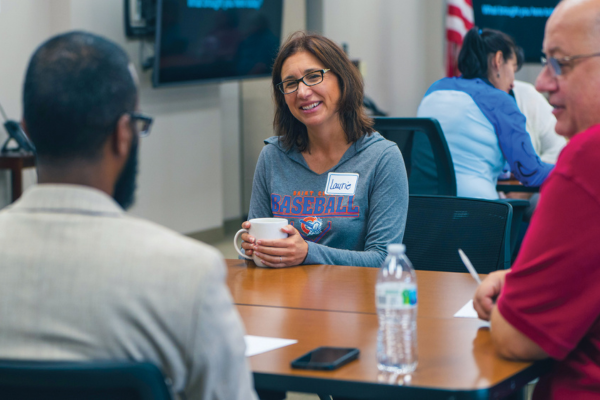Breaking the Mold
Type:
Article
Topics:
School Administrator Magazine
November 01, 2018
President's Corner
U.S. Department of Labor data published this year show that the unemployment rate for those with a high school diploma was 4.6 percent with median weekly earnings of $712. For those with an associate’s degree, the numbers were 3.4 percent and $836. For those with a bachelor’s degree, the numbers showed 2.5 percent unemployment and $1,173 median weekly earnings.
Students with bachelor’s degrees bring home on average almost double the weekly salary of their peers who do not have postsecondary degrees, which is impressive. However, that income advantage often comes with a price in the form of debt. The average student loan debt for college students graduating in 2017 was $39,400.
Increasingly, K-12 school systems and higher education institutions are partnering not only to improve college opportunities but also to lower the loan debt for those students who take advantage of them. One long-term partnership is between AASA and the American Association of Community Colleges. The two groups bring together K-12 and community college leaders to discuss effective programs that go beyond traditional dual credit, including programs in which high school students spend their day on the community college campus and graduate high school with an associate degree.
The Missouri Innovation Campus in the Lee’s Summit R-7 School District near Kansas City, Mo., is a remarkable example of a partnership among K-12, community college, four-year college and local business partners. During their junior year of high school, students in the program can earn credit for classes offered by the University of Central Missouri and Metro Community College. During their senior year, the students enter an internship at one of more than 40 businesses that partner in the program. Upon graduation, students are on track to complete a bachelor’s degree at the University of Central Missouri within two years.
The program allows students to get on-the-job experience and reduces expenses. Business partners benefit by hiring graduates with strong industry knowledge.
Charlotte-Mecklenburg Schools in North Carolina have a similar program. When the AASA Digital Consortium met in Charlotte for its summer meeting, the group visited Olympic High School to learn about their advanced manufacturing and engineering program.
Among the recent alumni of the program with whom we spoke were two impressive young men who had been on a traditional path to college but rethought that model after participating in apprenticeship programs. They are pursuing college degrees while working, with the support of their employers.
Why would a business invest in such a program? When asked, the employers’ response was “supply chain management.” A supply chain is the connected network of people, organizations and resources involved in the manufacture and delivery of a product or service.
K-12 education is part of this supply chain for human capital. The business partners recognize that as their workforce ages, the businesses will continue to have a supply of talented young people with new perspectives.
Today’s students have amazing opportunities thanks in large part to AASA members who are breaking the traditional mold of school. From virtual learning to vocational partnerships to early college opportunities to internships to apprenticeships and beyond, districts and their students are showing our communities the value young people bring to the table.
Author
Advertisement
Advertisement
Advertisement
Advertisement




.png?sfvrsn=3d584f2d_3)